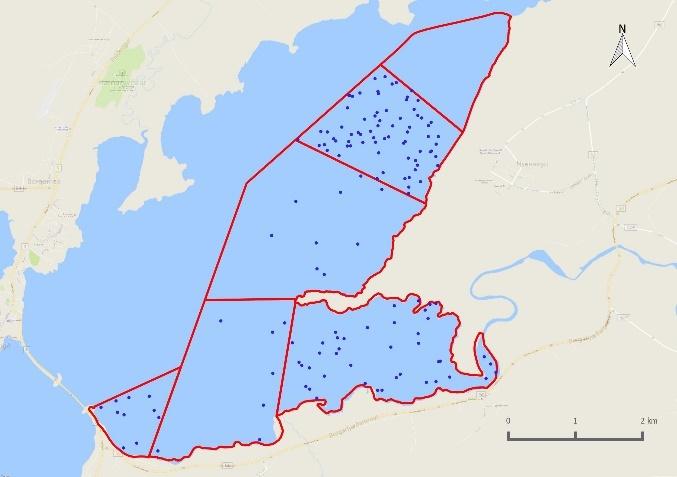
3 minute read
3.5 Roost sites
3.5 Roost sites
In the context of a tidal ecosystem, a roost site is generally considered to be a place where birds congregate when feeding on intertidal mud or other estuarine habitats is not possible due to the depth of water. Roost sites are of vital importance to waterbirds, especially waders, during the high tide period. Information on the location and composition of roosts is valuable for conservation, as it can help to determine if proposed developments or activities could lead to negative impacts for a given species or assemblage of waterbirds. As the tide rises, many species follow the tidal edge and may continue to forage as the tide pushes them to a high tide roost, or at some point stop feeding and fly to a high tide roost in another part of the site or beyond. Waders are constrained to forage in shallow water or intertidal flats, and roost close to the high tide line. Similarly, some other waterbirds and seabirds prefer shallow water for foraging and also roost at high tide when the water is deepest. Waterfowl and gulls often roost alongside waders above the high tide line, or in the water, adjacent to the wader roost.
Roosting behaviours are not site- and species specific (Scheiffarth et al. 1996), but can vary between years depending on factors such as weather (e.g. direction of prevailing wind), variability in prey abundance and availability, and variations in predation pressure. This highlights the value of monitoring over several years a way to more thoroughly understand how waterbirds and seabirds use wetland sites.
The definition of a roost has, for the purposes of this report is any place where birds regularly congregate during rising or high tides. Birds roosted extensively throughout the survey area, and 37 roosts were recorded. Fourteen roosts that were infrequently used, or were comprised of relatively small numbers of birds (< 100 bird-records throughout the survey period), are not documented here. Of the remaining 23 roosts, some were not consistently used, either in space or time. Some formed at various places along a stretch of coastline, and others were used in one part of the season and not another. For these reasons, these 23 roosting locations were amalgamated into 12 main roosts, and these are described here.
Most roosts were small comprising several hundred birds. Roosts were recorded in all subsites except Hvítárleirur (Est 5). Most of the roosting assemblages, in terms of frequency of use, consistency in location and abundance of birds were recorded in Kistufjörđur (Est 2) both in spring and in autumn (Figure 3-7, Figure 3-8). The majority of its northern shore was used by roosting birds at some point in the survey period, making it a very important area for roosting waterbirds. The number of birds using each roost was generally greater in autumn (than in the spring), corresponding to the greater abundance of birds at this time. However, some roosts (e.g. Roost 6), were important in spring and practically unused in autumn and vice versa.
Overall, the roosts that supported greatest numbers, or most consistently supported birds were Roosts 2, 3 ,5 and 6. The species composition, abundance (in spring and autumn) and frequency of use of the main roosts is outlined in Table 3-4.
Figure 3-7. Location of roost sites (orange) and twelve main roosts (red) recorded during weekly rising tide estuarine surveys in the Andakíll Ramsar site in spring (12th March and 7th June 2017).
Figure 3-8. Location of roost sites (orange) and twelve main roosts (blue) recorded during weekly rising tide estuarine surveys in the Andakíll Ramsar site in autumn (12

th June and 25th October 2017).










